Start a Landscaping Business

Do you love being outside and working with your hands? How about the idea of being your own boss?
If your answer to these questions is a resounding “Yes!” then starting a landscaping business could be the perfect career for you. It certainly was for Brian Linson, the founder of BL Landscapes.
Brian started BL Landscapes in 2014 with just a single truck and a 2-man crew. Six years later, the company has become one of the top professional landscape services, not just on Whidbey Island but in the Pacific Northwest.
You don’t need a ton of money or resources to start a lawn care company. As you’ll see from Brian’s journey, if you’re willing to put in the work and committed to quality and customer satisfaction, you can start a professional landscaping business that’s both successful and profitable.
As an alternative to starting the company from scratch, you can always buy an established lawn care business.
What Does a Landscaping Business Do?
Landscape businesses design, build, and maintain outdoor spaces for homes and businesses. They can range in scope from basic gardening and mowing lawn services to full-service landscape installation of elaborate gardens complete with water features, patios, and lighting.
A landscaping company can be as small as a single person with a lawnmower and some shovels, or a large multi-team business capable of providing a range of landscapers services.
A lawn care professional isn’t just a manual laborer. They’re also experts on which plants are suited to their climate and how to make them flourish. There’s a creative aspect to the job, as well, working with clients to design their ideal outdoor environment.
Some of the things you might do as a landscaping business are:
- Garden and lawn maintenance (mowing, fertilizing, weeding, etc.)
- Maintaining and trimming trees and hedges
- Grooming golf courses
- Laying sod and lawn planting service
- Planting flowers, trees, and bushes
- Corporate/company landscaping
- Designing gardens to customer specifications
- Laying out and constructing walkways
- Installing retaining walls
- Building decks and patios
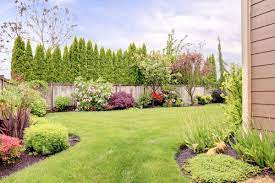
Basically, anything involving the land around a home or business is the domain of a landscape professional. While larger landscaping companies will provide all of these services, others specialize in one area, like lawn maintenance or flower bed design.
Step 1: Get Landscaping Experience.
Brian didn’t just wake up one day and decide to start BL Landscapes. His love of landscape design (and expertise in the field) grew out of years of work in the industry.
Speaking on his decision to open his own company, Brian says,
For context, BL Landscapes was founded 6 years ago, but Brian has more than 25 years of experience designing, installing, and maintaining outdoor spaces. The knowledge and skills gained in that time were crucial to opening and growing his business.
This isn’t to say you need decades of experience to succeed in the lawn care business. If you’ve only maintained your own lawn or gardened as a hobby, though, you should spend at least a few months as a landscape professional before you take the leap into opening your own business.
Keep in mind there are aspects of running a lawn care business that have nothing to do with how well you build paths and care for plants. A good landscaper knows how to evaluate the cost of materials and how much time a given project will take to complete.
Without this knowledge, you’ll find yourself navigating your first few client estimates by trial and error—and those mistakes can be costly, both in terms of finances and your reputation.
Mike Andes, owner and founder of August Lawn care found that his biggest help were podcasts and YouTube videos. It gave him the knowledge and tips he needed in his own landscaping business. You can find our interview with him here.
If you get started working for an established landscape service, you can also determine if you’re well-suited to the lifestyle. Brian’s workday usually starts between 6 and 7 AM, and that’s not unusual for the industry.
Lots of people like the idea of working outdoors, but the reality is often less than pleasant. Until you’ve spent 4 hours moving rocks on a hot summer day, you don’t really know if you’re suited to the landscaping business.
Step 2: Choose Your Niche and Services.
As you saw above, there’s a wide variety of services that are included under the umbrella term “landscaping”. For a small start-up company, it’s often best to focus on just one specialty, like lawn care or landscape design, rather than trying to start off as a full service landscape company.
Choosing a specialty will also help you save money in your initial budget. You can purchase just the specific equipment that you need, for one thing. You’ll also be able to use a smaller crew if you don’t need people with a wide range of skills and expertise.
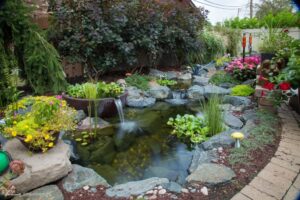
Common niches in the landscaping industry include:
- Landscape maintenance. Rather than building or installing landscapes, you’ll be the one pruning hedges, mowing the lawn, and watering the flowers to keep them looking beautiful. Maintenance companies require the lowest initial investment because they require less equipment. On the other hand, you won’t be able to charge as much per hour as you could for more creative and labor-intensive services.
- Fertilization, weeding, and pest control. This is a specialized form of maintenance that focuses on keeping plants and lawns healthy. It requires expert knowledge of plant and grass care. You’ll also be working with potentially dangerous chemicals, so you may need to obtain extra permits or training.
- Sod and lawn installation. Businesses in this niche lay sod, spread grass seed, and install lawns for customers. This often means more one-time contracts than the recurring services offered by maintenance companies.
- Deck and patio construction. Those who have skills with building and construction can put them to great use in a landscaping business. Along with installing the deck and patio, you’ll beautiful the area around it. Since this often involves new construction, you’ll need an intimate knowledge of your region’s building codes and other regulations.
- Landscape architecture and design. Businesses in this niche both design and install landscape features for clients. This can include labor-intensive projects like building retaining walls, building terraced gardens, or contouring the landscape. Designers work with customers, using their input to create attractive, livable outdoor spaces, so creativity and vision are key tools of the trade. You’ll also need to have some horticultural knowledge so you can arrange plantscapes that last and thrive.
Commercial vs. Residential Landscaping
Along with deciding which specific services you’ll offer, it’s also a good idea to consider what kind of customers you’ll work with. BL Landscaping focuses on residential landscaping, for two key reasons:
- Lower up-front costs. Residential landscaping companies typically take a deposit at the start of the project that covers the cost of the materials. In commercial landscaping, you often don’t receive your pay until the job is finished, so you’ll have to pay for the materials out of your company’s funds.
- More creative freedom. In commercial landscaping, you’re typically working from a plan provided by the company. Even if this plan has flaws, you don’t get any freedom to make changes or improve it. With residential landscaping, you can work with the customer and make recommendations, giving you more control over the quality of the end result.
Commercial landscaping also has its advantages. You can have fewer clients, since commercial projects are often larger both in regards to the area and the client’s budget. It can also provide a more consistent revenue, especially in the maintenance and lawn care niche.
Setting a Fair Price
One of the hardest things for new landscaping businesses is knowing how much to charge for services. Brian’s advice:
Different regions have standard price ranges for landscaping services, so that’s the first thing you should look up when you’re deciding on your prices. Each project is unique, though, and there’s certainly a learning curve when it comes to bidding on projects.
Many new landscaping businesses have a tendency to under-bid for projects. They want all the work they can get and don’t want to be turned down by the client. To combat this, Brian says,
Average National Cost for Residential Landscaping Services (2)
- Lawn mowing/maintenance: $130
- Removing a tree stump: $300
- Leaf removal: $355
- Asphalt paving: $500
- Tree and shrub maintenance: $800
- Deck sealing and waterproofing: $880
- Concrete removal: $1,000
- Patio or path repair: $1,350
- Deck repair: $1,725
- Installing sod: $1,850
- Driveway repair: $1,650
- Resloping/contouring: $1,950
- Fountain installation: $2,600
- Pond installation: $3,100
- Landscape installation: $3,300
- Patio and path installation: $3,900
- Landscape design: $4,400
- Installing a retaining wall: $5,400
- Building a deck: $7,650
Step 3: Establish Your Company.
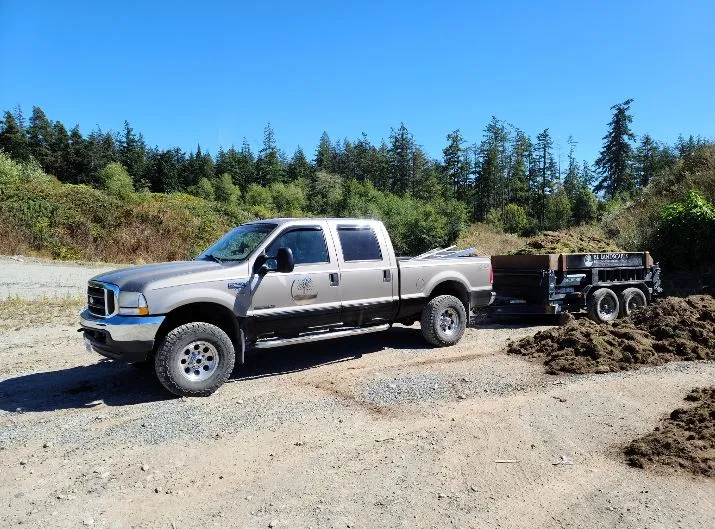
Once you’ve determined what kind of services you’re going to offer, you’ll be better able to do the logistical work of establishing a company. This includes:
Naming Your Business
It’s important to put some thought into choosing the name of your company. This is the first impression customers will get when they’re first introduced to your business, so you want it to accurately convey the services you offer.
Once you’ve picked a business name it’s a pain to change it, so that’s more motivation to get it right the first time. If you’re having trouble coming up with a business name, a business name generator can help you get started.
The best business name is short, simple, and tells people exactly what your business does. It should be easy to remember, but also unique enough to stand out from the competition.
Keep in mind that much of a business’ presence in the modern day is online. Check for available domain names before choosing your name so you can get one that matches, at least closely enough your customers won’t be confused. You can use the WhoIs LookUp to see if a domain is available.
Writing a Landscaping Business Plan
A business plan is a living document that plans for the future of your company. You’ll definitely need one if you plan to apply for small business loans or other financing, since both bankers and investors will ask to see it.
Even if you’re opening the business with your own savings, though, a business plan is a helpful document. It’s where you’ll outline your company’s mission statement and long-term goals, along with detailing your initial and ongoing expenses.
If you’ve never written a business plan before, take a look through a sample business plan to get more guidance on what to include and how to write it. Among the things your business plan should include are:
- The business’ mission and objectives
- A description of the company
- The services you’ll offer
- An analysis of the market
- A summary of your sales and marketing strategy
- The business’ organizational and management structure
- Initial budget figures and financial projections
Not all business plans include all these sections, but the more you include, the better the document can serve as a roadmap for your company’s future.
Landscaping Business License Requirements
Every new business has to be registered before they can legally operate. This starts by registering your DBA, or “doing business as” name, with both the state and federal governments. Business names need to be unique, so you should check this database before starting the registration process.
You’ll also need to obtain an Employer Identification Number (EIN). This is your business’ federal tax ID, which you’ll need to open a bank account, hire employees, or apply for local permits. You can apply for an EIN through the IRS website.
The specific licenses and permits required for a landscaping business vary depending on your state. Check with your state’s business licensing association to find out what’s required in your area.
Step 4: Purchase Your Initial Tools and Equipment.
The types of landscape services you’re going to provide determine which specific equipment you’ll need. After you’ve decided on a niche, you’ll be better able to list all of the tools you’ll need.
If your start-up budget isn’t enough to cover everything on your list, you don’t need to fret. Start by renting more expensive tools, then buy them as you go. This was Brian’s approach when BL Landscapes was first starting. Even now, he says,
This can cut into your profits, of course—if you spend $500 on equipment for a $1,000 job, you’re not going to have much left over at the end. It’s worth it in the long run, though, because the next time a job calls for that tool, it’ll be pure profit.
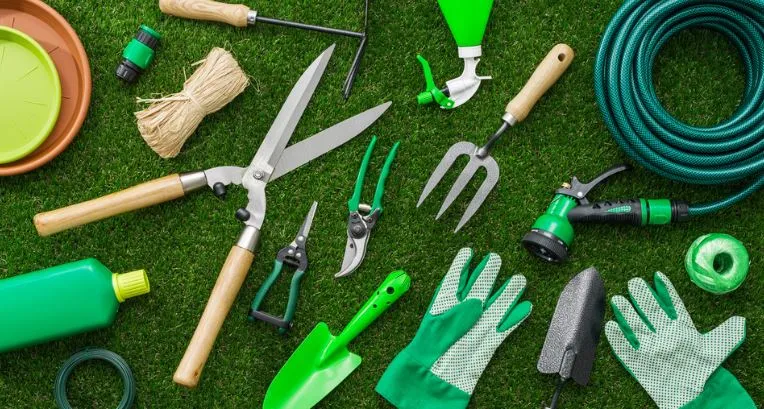
Generally speaking, it’s better to buy fewer pieces of high-quality equipment than try to buy a full range of tools right off the bat. All tools wear out over time, but a well-made shovel with a fiberglass handle will serve you well for longer than the cheapest option on the shelf. Craigslist can be a good place to find used equipment if you want to save some money. For new tools, you can check hardware stores like Home Depot and Lowes, as well as nurseries or farm supply stores.
Common Equipment Used in Landscaping Businesses
Here is some of the equipment you’re likely to need as a landscaping business, along with their average cost (3)
- Manual gardening tools (shovels, rakes, shears, trowels, etc.): $10-$50 each
- Push mower: $200-$1,000
- Riding lawn mower: $1,000-$5,000
- Leaf blower: $100-$500
- Lawn spreader: $100-$500
- Sprayer (for fertilizer, pesticides, etc.): $50-$200
- Trimmer: $50-$300
- Edger: $80-$350
- Water saw: $500-$4,000
- Plate compactor: $300-$5,000
- Trailer: $1,500-$5,000
- Heavy-duty truck: $10,000-$50,000
- Portable generator: $500-$2,000
Step 4: Build Your Team.
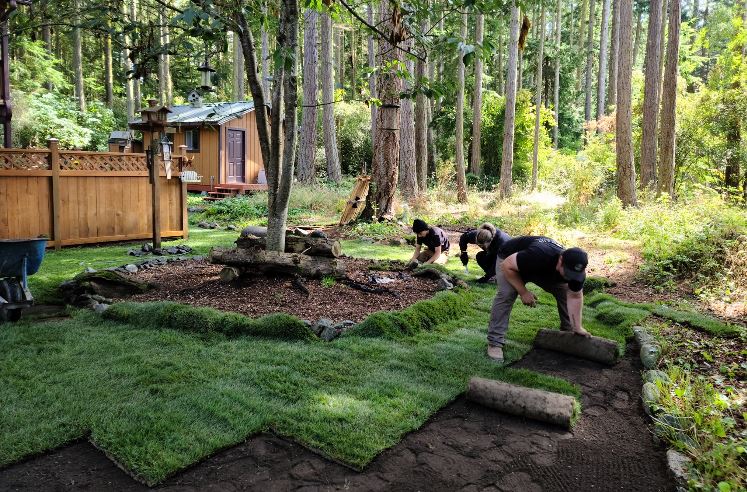 Some landscaping companies are one-man operations, but for larger jobs you’ll need some help. Finding good workers is one of the most difficult aspects of owning a business, and while you can find plenty of advice on the topic, there’s no substitute for experience.
Some landscaping companies are one-man operations, but for larger jobs you’ll need some help. Finding good workers is one of the most difficult aspects of owning a business, and while you can find plenty of advice on the topic, there’s no substitute for experience.
Offering competitive pay is a good way to attract top talent to your company. BL Landscapes is known for taking care of their employees, and part of this is the pay which—at $25/hour—is higher than what most other area landscaping companies offer.
Pay isn’t the only thing that matters to staff, though. Offering flexible hours that let employees maintain a good work/life balance can be just as important to workers. The bottom line is if you take care of your employees, they’ll do the same in return by giving you their best work.
As far as where to find quality employees, job marketplaces like LinkedIn and Monster are always an option. Trade schools and colleges can also be a great place to find candidates looking for work, especially in the late spring when students typically graduate.
Step 5: Get your name out there
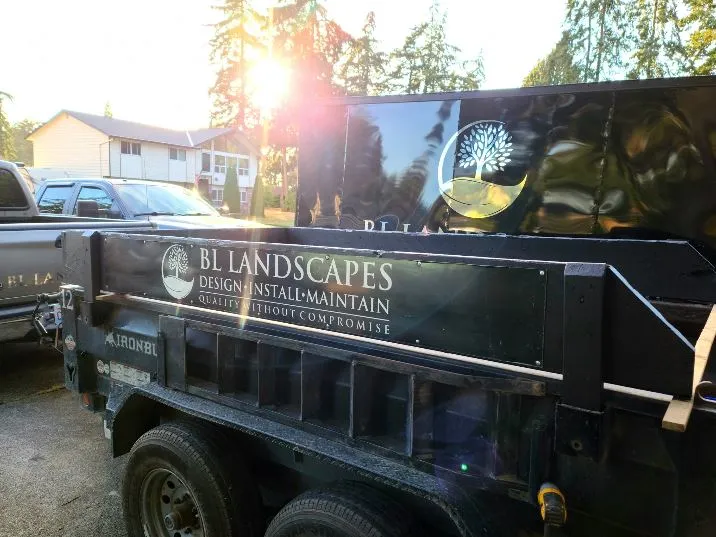 The first thing Brian did when he started BL Landscapes was reach out to local real estate agents. He also built relationships with his local suppliers, like nurseries and home improvement stores. As a low-cost marketing option, Brian says,
The first thing Brian did when he started BL Landscapes was reach out to local real estate agents. He also built relationships with his local suppliers, like nurseries and home improvement stores. As a low-cost marketing option, Brian says,
Social media marketing is excellent for landscaping companies since the work is so visual. BL Landscapes has focused on building an online following, evidenced by their more than 8,000 Facebook followers.
Platforms like Pinterest and Instagram are also great for sharing images of your landscaping work. Make sure to take pictures of the area before you start working on it. Customers love seeing “before and after” comparisons that can showcase your abilities better than any written testimonial.
Not experienced with social media? That’s okay! You can learn how to utilize it more effectively with online courses from places like Udemy or Coursera. Hiring a social media marketing agency can also be a great option if you have the space in your budget.
Step 6: Deliver Quality Work
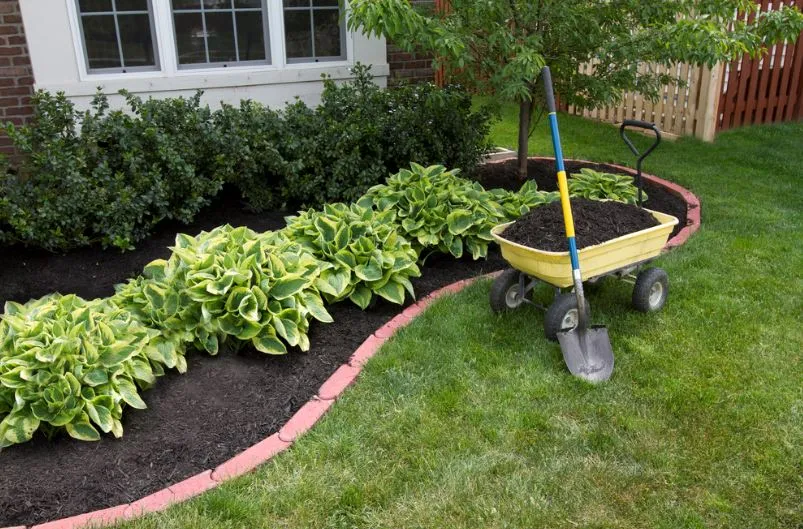 The absolute best advertising for a landscaping company is a well-completed project. If you consistently deliver long-lasting, beautiful landscapes, that will both secure their repeat business and bring in new clients when those happy customers tell their friends.
The absolute best advertising for a landscaping company is a well-completed project. If you consistently deliver long-lasting, beautiful landscapes, that will both secure their repeat business and bring in new clients when those happy customers tell their friends.
About 50% of BL Landscapes’ business comes from repeat customers. Continuing service and after-installation coverage is a huge part of this. They cover their work with a warranty, and will often help fix issues for customers even after this period has expired.
As Brian says:
This approach has paid off for him. In their 6 years of business, BL Landscapes has a 100% customer satisfaction rate. His customers know they can count on him to use high-quality materials that will stay beautiful for years to come.
One of Brian’s biggest pieces of advice for landscapers is to dream big. As he says,
Clients often don’t know exactly what they want, and a good landscaper can help them see the true potential of the space. The more projects you complete, the more confident you’ll feel about suggesting that water feature or terraced garden the customer didn’t even know they wanted.
How Much Does it Cost to Start a Landscaping Business?
Initial expenses for a landscaping company vary widely, depending on the size and scope of your operations. If you’re a one-person operation that only performs basic maintenance and mowing services, you can get started with as little as $5,000 or less.
That said, most landscaping businesses will require a larger investment. The average start-up cost is between $15,000 and $20,000 if you’re starting from scratch.
There are ways to lower these start-up costs, though. Buying used rather than new equipment can cut down significantly on your expenses. You can also rent much of the equipment from home improvement stores, typically for around $100/day. While this is less cost-effective in the long term, it can be an excellent way to save on initial expenses if your financial resources are limited.
If you don’t want to start a business from the ground up, your other option is to buy an existing business (see how here). While this often takes more money up-front, it can be a good option for a first-time entrepreneur since you won’t need to do as much leg work to get it off the ground.
How Much Does a Landscape Business Owner Make Per Year?
The short answer, again, is “it depends.” According to Lawn & Landscape Magazine’s State of the Industry Report, the average annual salary of a landscape company owner ranges from around $31,000-$69,000 per year.
Lawn care business owners interviewed by Entrepreneur.com reported earning between $5,000 and $50,000 in their first year of business. That income will grow once you’re established. Those same owners reported annual earnings around $160,000-$250,000 once they’d been in business a few years.
These are average figures, but the truth is the sky is the limit when it comes to earnings. BL Landscapes earned around $700,000 in 2019, and are on track to reach $800,000 in 2020. The more projects you’re able to take on and complete, the higher your earnings will go.
What’s the Bottom Line?
It doesn’t take a huge investment to start a landscaping or lawn care company—and the revenue potential is high, as you can see in the figures from BL Landscapes above. The best way to achieve that kind of financial success is to plan ahead and make sure your company has a strong foundation from the very beginning.
Whether you start your own landscaping company or buy one that’s already up and running, the ultimate key to long-term success is to provide quality services. Starting a new business is never easy, but the effort you put in can yield fantastic results if you follow the steps Brian took to grow BL Landscapes into the successful business it is today.